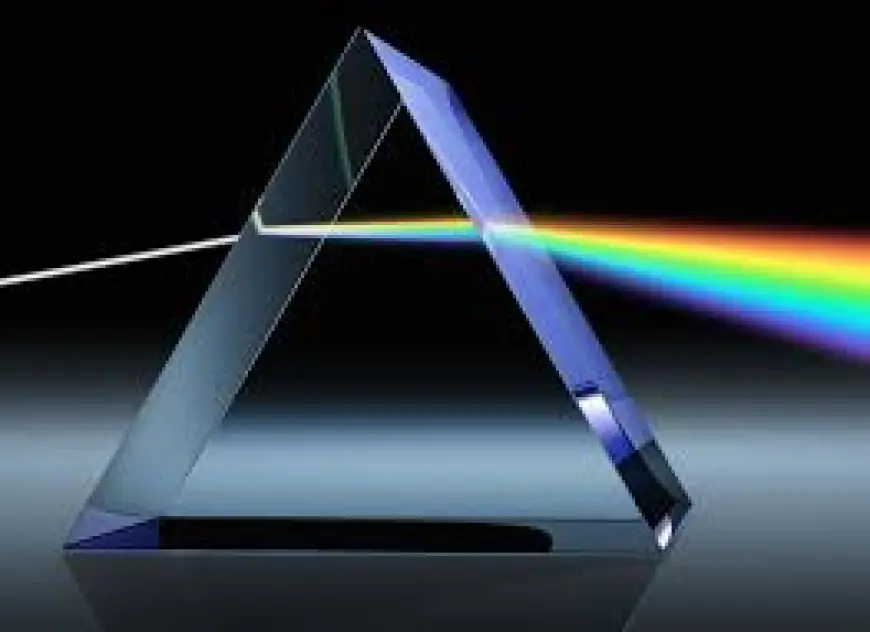Prism in Everyday Life: Uses, Benefits & Buying Guide
A prism is a transparent optical element that bends and splits light into different directions.

A prism is a transparent optical element that bends and splits light into different directions. Commonly made of glass or other optical materials, prisms are used in various fields like education, photography, medical devices, and scientific research. For everyday users, prisms bring value through clear imaging, light control, and even decorative applications.
Prisms are not only scientific tools but also practical components found in binoculars, cameras, and laser systems, making them an essential part of modern optics.
What is a Prism and How Does It Work?
A prism works on the principle of light refraction. When light enters the prism at an angle, it slows down and bends, separating into its constituent colors (spectrum). This property makes it useful in:
-
Splitting white light into rainbow colors
-
Redirecting light paths in optical instruments
-
Enhancing image clarity and brightness
Types of Prism
Several types of prisms are designed for different purposes:
-
Dispersive Prism – Splits light into colors, commonly used in classrooms and labs.
-
Reflective Prism – Redirects light paths, useful in binoculars and cameras.
-
Beam-Splitting Prism – Divides a single light beam into two or more parts.
-
Dove Prism – Rotates images without altering their orientation.
Benefits of Using a Prism
1. Improved Visual Clarity
Prisms enhance brightness and contrast in devices like binoculars, telescopes, and cameras.
2. Educational Value
In classrooms, prisms help students understand the science of light and colors.
3. Wide Application Range
From healthcare to entertainment, prisms are used in microscopes, projectors, and laser optics.
4. Durable & Versatile
High-quality glass prisms are scratch-resistant, long-lasting, and adaptable to multiple uses.
Everyday Applications of Prism
-
Binoculars & Telescopes – Used to redirect light paths and improve image orientation.
-
Photography & Cameras – Help control reflections and create special effects.
-
Medical Devices – Enhance vision and imaging in diagnostic equipment.
-
Educational Tools – Demonstrate refraction, reflection, and spectrum analysis.
-
Laser Technology – Used in labs, surgeries, and industrial machines.
Prism vs Regular Optical Glass
| Feature | Prism | Regular Glass |
|---|---|---|
| Function | Bends & splits light | Allows light to pass |
| Applications | Optical instruments, science | General transparency |
| Clarity Control | High | Limited |
| Durability | Strong, multi-purpose | Standard strength |
This shows why prism is preferred for optical devices and scientific tools.
Tips for Choosing the Right Prism
When buying a prism, consider:
-
Material Quality – High-grade optical glass ensures clarity.
-
Purpose – For light dispersion, reflective, or educational use.
-
Size & Design – Match the device or experiment requirements.
-
Coatings – Anti-reflective coatings improve light transmission.
Future of Prism Technology
Prisms are evolving with modern optics, now being integrated into augmented reality (AR), laser systems, and advanced imaging technologies. Their ability to control and manipulate light ensures they remain relevant in both science and everyday products.
Conclusion
Prisms are not just for science labs—they are part of our daily lives through binoculars, cameras, medical devices, and even smart technologies. By selecting the right type, users can experience improved clarity, durability, and precision. A prism remains one of the most versatile and valuable optical tools available today.
What's Your Reaction?
 Like
0
Like
0
 Dislike
0
Dislike
0
 Love
0
Love
0
 Funny
0
Funny
0
 Angry
0
Angry
0
 Sad
0
Sad
0
 Wow
0
Wow
0



















































